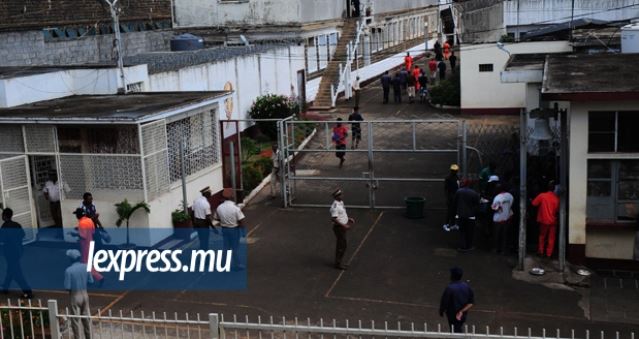Publicité
The corruption problem in Mauritian prisons
Par
Partager cet article
The corruption problem in Mauritian prisons

This week kicked off with news that some prison officers at Beau-Bassin prison are under investigation for allegedly working with a drug trafficker inmate. The news only highlights how the penitentiary administration in Mauritius is struggling with its corruption problem when it comes to drugs
Why are prisons so vulnerable?
The news that three officers at Beau-Bassin prison are being investigated by the Independent Commission against Corruption (ICAC) and the police for allegedly working with a drug trafficker locked up there stresses how Mauritian prisons continue to be plagued with corruption issues. That drugs should be particularly problematic in prisons should come as little or no surprise; according to health minister Kailesh Jagutpal last July, nearly 3,400 out of 7,000 people imprisoned annually are there for drugs or drug-related crimes, such as money laundering or petty theft.
Mauritius is, after all, a prominent drug destination for regional smuggling routes. Since the moratorium on the death penalty in 1995 and a 2007 Supreme Court case (Philibert and others vs. the state) that saw mandatory life imprisonment for drug trafficking as unconstitutional, courts in Mauritius have sentenced drug dealers to long terms ranging from 10 to 60 years. The result is that at any one time, nearly 40 per cent of inmates in Mauritian prisons are serving drug-related sentences.
“There is a strong corelation between drugs and prison,” says Imran Dhanoo, who runs Idrice Goomany treatment and rehabilitation Centre in Port-Louis, “out of every 10 people that we treat, about four have been to prison. And we have people who went to prison for other crimes, but came out as full-blown addicts”. Although there is a lot of anecdotal evidence about how drugs are exacerbating the corruption problem within the prison service, Dhanoo adds, “there has been no formal assessment on the extent of that corruption”.
The drugs inquiry commission
In July 2018 the drug commission of inquiry headed by former Supreme Court judge Paul Lam Shang Leen submitted its report, part of its job being to probe how drug-fuelled corruption was eating away at the police and prison services. A few months before the report was released to the public, a trafficker Kusraj Lutchigadoo – under arrest after he was caught in Triolet with over a kilo of synthetic drugs – was simply allowed to walk out of the Vacoas Detention Centre. “It is clear in this case” said then-minister mentor Sir Anerood Jugnauth in parliament on 20 June 2018, “that the police officers who were there, responsible, were accomplices of this fellow. They allowed him to go, and they must have been having some interest in it. Otherwise, they would not have allowed him to go.” That is to say, when the commission came out with its report, it came as little surprise that it had found that corruption was a major problem in the police (and recommended disbanding the Anti-Drug Smuggling Unit) and the prison administration.
“The drug business cannot continue without corruption. There is just too much money involved,” says Sam Lauthan, former minister and one of the commission assessors. And the source of much of this corruption seems to be the roughly 40 major drug traffickers currently serving sentences in the Mauritian prison system. What the commission found was an elaborate system where drugs and mobile phones were being brought into prisons to allow incarcerated dealers to continue their business, both within and outside prison. One method was by simply lobbing drugs over prison walls, particularly at the Beau-Bassin, GRNW and Petit-Verger prisons. With prison officials simply being told to look the other way.

Other methods included trusted prisoners enlisted for menial work – ‘red band prisoners’ – helping to smuggle contraband in through goods vehicles. “Aside from pelting, we found that prisoners would smuggle in drugs, sim cards and mobile phones they got from visitors or when they went out to court or hospital. Some of them even carried by prison officers themselves,” says Lauthan. At one commission hearing, jailed trafficker Siddick Islam smuggled out some synthetic drugs and presented it before the commission to show how easy it was to smuggle contraband in and out of prison.
Just how pervasive the corruption problem came out, the commission report noted that by 2018, 23 cases of prison officers implicated in smuggling drugs within prisons and as many as 1,500 cases of smuggling mobile phones and sim cards into prisons involving prison officials were being investigated at the time. These mobile phones and sim cards being used by jailed drug dealers to continue to run their drug business on the outside. After scrutinizing the records of calls from jailed traffickers, such as Peroumal Veeren, Siddick Islam, Curly Chowrimootoo and Jean Jacques Dereck, the report noted, “the prison administration estimates that about 40 major drug dealers continue to control distribution networks across the country from within the confines of their cells”.
Banking details of certain prison officials were scrutinized by the commission to find that they were often in the red, with mysterious deposits then appearing, which these officials explained away as money from gambling or winnings at horse races. What was also found was that many of those prison officials working with traffickers had taken out big loans from the Civil Service Mutual Aid Association and the Employees Welfare Fund, with their official salaries barely able to service those loans. “What we saw was that jailed traffickers work on three Ws: wealth, wine and women. And for prison officers who generally come from poor and lower middle class backgrounds, that’s a big temptation. They are just encouraged to take loans which are then paid for by the traffickers.” Just consider, he adds,“ if a prison officer earns Rs20,000, then can get as much as Rs100,000 for smuggling in a single smartphone. That’s four times his salary for a single phone! Unfortunately, these are the bad apples that give the rest a bad name”.
Since the report…
Since the commission filed its report in July 2018, the government the following August set up a task force to look into its recommendations that met 12 times until January 2021. Out of the over 400 recommendations, the government has been eager to show that it has implemented most of them. Just last year coming up with a law to set up a panel to route drugs users away from prison and extending the Declaration of Assets Act to include prison officials as well.

But some prominent recommendations of the commission have remained untouched: it recommended setting up a separate drugs court and a Juge d’application des peines to regulate visits, disciplinary action, and welfare of prisoners. “This has not happened yet,” says Lauthan. Another major recommendation was the review of personnel recruitment into the prisons service. This is not a new complaint: in 2010, Glenn Ross, a visiting UNODC expert, noted that prison training had not changed much since 1968, and that prison guards lacked basic knowledge when it came to searching cells or handling prisoners.
And in 2018 itself, the prison administration had to explain how it had recruited into the prison service someone who himself was out on bail at the time and facing charges related to a double murder. “It’s good that asset declarations have been made mandatory,” says Dhanoo, “but now we also have to address recruitment.” The commission also asked for an in-depth investigation into the prison administration itself to see how deep the rot had set in. This was ruled out by the government as early as October 2018, and has never been revisited since. “We probably need a new commission to look at the prison specifically,” says Dhanoo.
Since then, although the question of drugfuelled prison corruption has not been raised politically, things are unlikely to have got much better. In the aftermath of the commission’s report, the government was eager to show that the situation had changed. In October 2018, Sir Anerood Jugnauth told parliament that in response to government taking an active interest in the problem, “it has been quite some time now that there had been no case of pelting”.
The National Audit Office report of 2017- 2018 flatly contradicted this, stating that 326 mobile phones and 1,124 other items, such as batteries, sim cards, chargers, improvised weapons, and syringes had been seized between November 2017 and December 2018 from the Eastern High Security Prison alone. In 2018, nearly 300 of those items had been pelted over the walls. If the commission called for more hardware such as CCTV cameras – “when we visited prisons, we found that a lot of CCTV cameras were not working,” Lauthan points out – by April 2021, it emerged that out of 1,320 CCTV cameras installed at prisons, 454 were not working.
Between crumbling infrastructure at the prisons and its corruption problem that continues to be denied, the costs to everyone else is becoming all too obvious to people on the ground like Dhanoo: “I have been doing this for so many years now. In spite of all the arrests, the drugs just keep coming.”
Publicité
Publicité
Les plus récents






